On August 6 and 9, 1945, the United States dropped the first atomic bombs ever used in war on Hiroshima and Nagasaki, destroying the two Japanese cities and causing the deaths of hundreds of thousands of people.
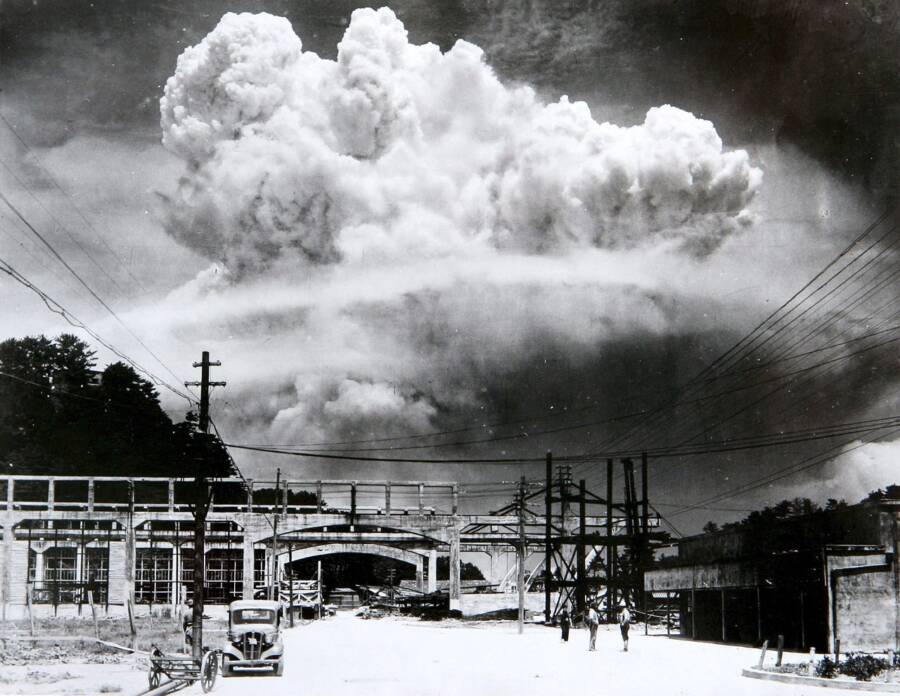
Public DomainThe atomic cloud above Nagasaki on August 9, 1945.
In August 1945, the world changed forever with the atomic bombings of Hiroshima and Nagasaki. The first use of atomic bombs in war, the attack brought hell to both Japanese cities, killing tens of thousands of people in a flash and destroying buildings in the blink of an eye.
Mankind had never seen anything like it — and the Japanese were shocked by how a single bomb could effectively demolish an entire city. But after the successive atomic bombings of Hiroshima and Nagasaki, the reality of the atomic bomb was all too clear. Soon afterward, Japan surrendered to the Allies, and World War II officially came to an end in September 1945.
This is the full story of the atomic bombings of Hiroshima and Nagasaki, from the death toll to how the targets were chosen to why some argue that the bombings weren’t necessary to force Japan’s surrender.
What Were The Bombings Of Hiroshima And Nagasaki?
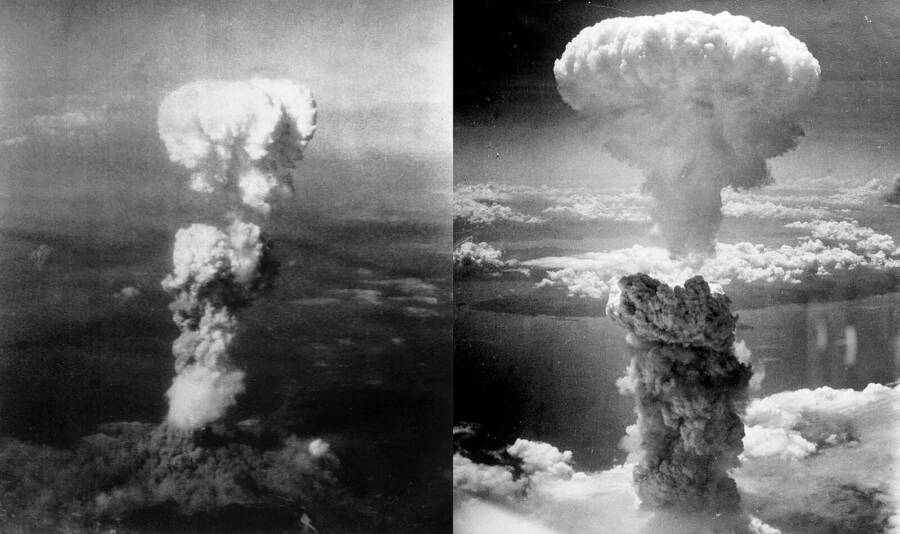
Wikimedia CommonsThe atomic bombings of Hiroshima (left) and Nagasaki (right).
The bombings of Hiroshima and Nagasaki were attacks on two Japanese cities by U.S. forces in August 1945, near the end of World War II. They marked the first — and, to date, only — use of atomic bombs in war.
The atomic bomb had been developed by the Americans during the Manhattan Project, which successfully tested an atomic device on July 16, 1945, at the Trinity test site in New Mexico. Shortly thereafter, a number of U.S. ships, including the USS Indianapolis, were dispatched to transport components for the powerful bomb to the island of Tinian.
Then, in August 1945, the U.S. decided to use the atomic bomb on Japan.
Why Did The U.S. Bomb Hiroshima And Nagasaki?
By August 1945, World War II had already ended in Europe. Nazi Germany had surrendered to the Allies in May, but the Japanese vowed to fight on. On July 26th, the Japanese rejected the Allies’ terms of surrender put forth in the Potsdam Declaration, which threatened “utter devastation of the Japanese homeland” if the Japanese refused its conditions and continued to fight.
A week and a half later, the U.S. prepared to bomb Hiroshima and Nagasaki.
When Was Hiroshima Bombed?
Hiroshima, Japan was bombed on August 6, 1945 at 8:16 a.m.
Why Did The U.S. Bomb Hiroshima?
Though the U.S. weighed a number of targets, including ones that were far more remote than Hiroshima, the city was ultimately chosen for two reasons. The Americans wanted to show the power of the bomb, and they wanted to force the Japanese into an unconditional surrender.
Hiroshima had a population of 350,000 people at the time, but it was also a compact city, which meant that a bomb dropped from a plane would effectively destroy almost the entire metropolis. Plus, Hiroshima had some important factories that made it a legitimate military target.
What Plane Dropped The Atomic Bomb?
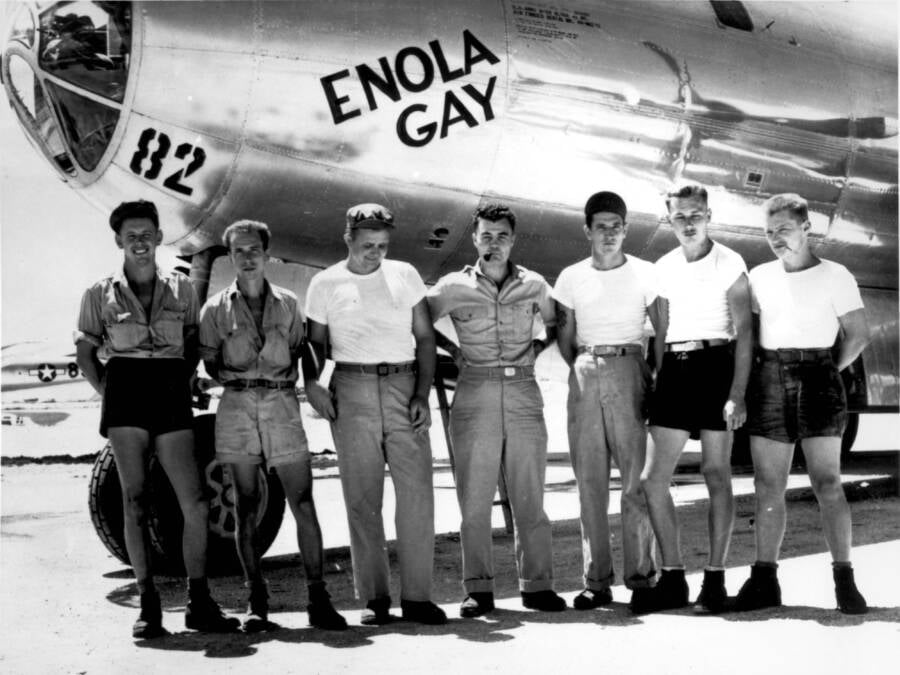
Public DomainThe crew of the Enola Gay, which was named after the mother of the pilot, Paul Tibbets.
The atomic bomb was dropped on Hiroshima by a United States Army Air Forces plane called the Enola Gay. The plane was named after Enola Gay Tibbets, the mother of the aircraft’s pilot, Colonel Paul Tibbets.
Who Dropped The Bomb On Hiroshima?
Paul Tibbets was the pilot of the Enola Gay, but he wasn’t flying alone. The plane carried a crew of 12 men, who had been told that they would “take part in an effort that could end the war,” according to Air Force Magazine. Around 7:30 a.m., as the crew made their way toward Hiroshima, Tibbets told them: “We are carrying the world’s first atomic bomb.”
What Bomb Was Dropped On Hiroshima?
The bomb that the Enola Gay dropped on Hiroshima was called the Little Boy bomb, but there wasn’t anything “little” about it.
How Many Kilotons Was The Hiroshima Bomb?
The Little Boy bomb, dropped on Hiroshima, had 15 kilotons of TNT.
The world’s first atomic bomb detonated 1,968 feet above Hiroshima, 43 seconds after it was released from the Enola Gay. Its fireball swiftly swelled to 900 feet in diameter, and a mushroom cloud began to form as temperatures on the ground reached 7,000 degrees Fahrenheit.
The blast from the bomb traveled at 984 miles per hour, killing tens of thousands of people instantly and destroying more than two-thirds of the city’s buildings. Structures melted, and people and animals were incinerated.
But some of the dead left a disturbing mark behind.
What Were Hiroshima Shadows?
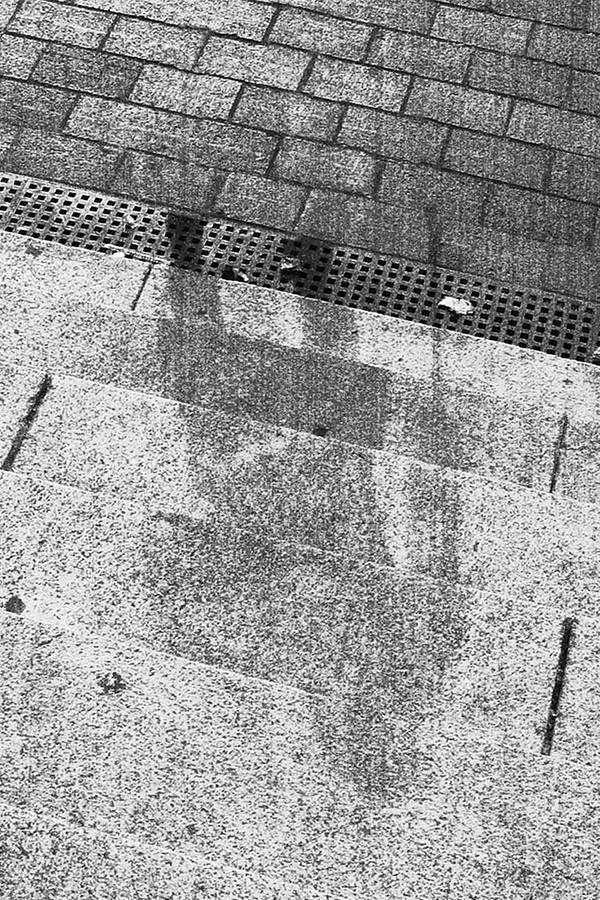
Universal History Archive/Getty ImagesThe shadow of someone who was sitting while holding a walking stick when the atomic bomb was dropped on Hiroshima.
Hiroshima shadows were created from the blinding blast of the atomic bomb. It was so hot and bright that it bleached everything around it — and left eerie, dark, “nuclear shadows” of people in the spot where they had died.
These shadows are sometimes mistakenly believed to be vaporized human remains, but they’re actually just the parts of concrete and stone that weren’t bleached like the surrounding area because humans, animals, or other objects absorbed the heat and light of the bomb and blocked those specific areas on the ground from being bleached, too.
How Many People Died In Hiroshima?
During and after the bombing of Hiroshima, tens of thousands of people lost their lives. Exact numbers are difficult to determine, since the city’s infrastructure was obliterated by the attack. The U.S. military claims that some 70,000 people were killed, but the City of Hiroshima website states that an estimated 140,000 died by the end of 1945, some in the immediate aftermath of the bombing, and some from radiation poisoning.
What Did Japan Do After The Bombing Of Hiroshima?
In the immediate aftermath of Hiroshima, the Japanese hesitated. Some did not believe U.S. President Harry S. Truman when he announced that the United States had dropped an atomic bomb on Hiroshima. According to the Atomic Archive, the Japanese only acknowledged that the U.S. had dropped a “new” kind of bomb. Meanwhile, many officials believed that even if the Americans had dropped an atomic bomb, they had probably used the only one they had. If the U.S. had more bombs, many Japanese doubted that they would be as powerful as the one that had been dropped on Hiroshima.
But the next bomb that the U.S. dropped would be even bigger.
When Was Nagasaki Bombed?
Nagasaki was bombed on August 9, 1945, at 11:02 a.m.
Why Did The U.S. Bomb Nagasaki?
Determined to force the Japanese to surrender, the U.S. decided to drop a second atomic bomb. Their initial target was the city of Kokura, where the Japanese had a large military arsenal. However, thick clouds over Kokura on the morning of August 9th meant that the U.S. changed their plan. Instead of Kokura, they decided to bomb their secondary target, Nagasaki.
What Bomb Was Dropped On Nagasaki?
The bomb dropped on Nagasaki was called “Fat Man.” The almost 10,000-pound plutonium-based bomb exploded with the force of 21 kilotons — far greater than “Little Boy” — 1,650 feet above the city.
How Many People Died In Nagasaki?

Public DomainThe ruins of Nagasaki following the atomic bombing.
As in Hiroshima, the exact death toll of the Nagasaki bombing is difficult to estimate. Most sources estimate that some 40,000 people were killed immediately, though it’s likely that the real number is much higher. Stafford Warren, the Chief Medical Officer of the Manhattan Project, testified before Congress in 1946 that while 40,000 bodies were known to have been burned and cremated, “it is my belief that there must have been 20,000 or 30,000 more in the ruins, buried or consumed by the fire.”
How Many People Died In Hiroshima And Nagasaki?
In the immediate aftermath of the bombings, some 70,000 people died in Hiroshima and 40,000 in Nagasaki, which suggests that 110,000 people died in the atomic bombings of Japan. However, other estimates of the death toll — including people who succumbed to injuries or radiation poisoning — is much higher. Some estimate that 140,000 people died in Hiroshima, and 70,000 died in Nagasaki, which would be a death toll of 210,000.
Some estimates go even further, claiming that as many as 246,000 people might have died because of the bombings.
Were Hiroshima And Nagasaki The Deadliest Bombings Of WW2?
No — Hiroshima and Nagasaki were not the deadliest bombings of World War II. The most fatal bombing of the war was the firebombing of Tokyo, which killed roughly 100,000 people in a single night on March 10, 1945.
Did Anyone Survive Both Hiroshima And Nagasaki?
One person is officially recognized to have survived both the bombings of Hiroshima and Nagasaki: Tsutomu Yamaguchi. On August 6, 1945, he was in Hiroshima for work. He survived the bombing there with injuries, only to return home to Nagasaki — where he survived the second bombing as well.
Though Tsutomu Yamaguchi had other coworkers who survived both bombings, and there were likely dozens of others who endured both attacks, he remains the only “twice-bombed person” recognized by Japan, and that recognition only came a year before he died in 2010 at 93.
When Did Japan Surrender?
Following the bombing of Nagasaki, Japanese Emperor Hirohito agreed to accept the conditions of the Potsdam Declaration. After a back-and-forth with the United States over the next several days, Hirohito announced Japan’s surrender over the radio on August 15, 1945.
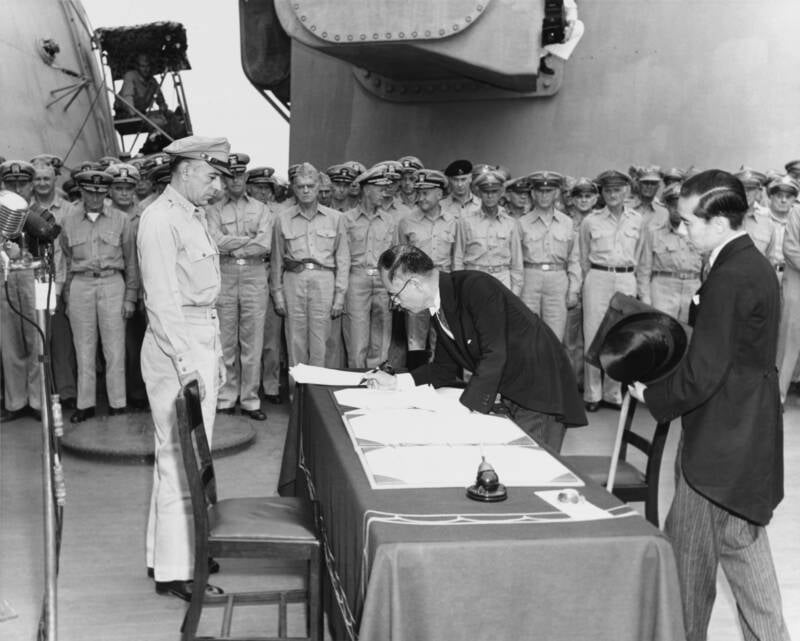
Public DomainThe Japanese formally surrendered on Sept. 2, 1945, officially bringing World War II to an end.
On September 2nd, Japan formally surrendered aboard the USS Missouri.
Why Did Japan Surrender In WW2?
While the atomic bombings of Hiroshima and Nagasaki certainly played a role in Japan’s surrender, there were several factors at play. By August 1945, the Japanese military was all but defeated, its cities decimated by bombings, and its economy destroyed. Food shortages were also rampant.
Then, on August 8th, the Soviet Union declared war against Japan.
It raises the question of whether or not the atomic bombing of Japan was militarily justified; perhaps the country was already on the brink of defeat. But many people believe that Japan would have fought on despite its many obstacles, possibly raising the death toll of the war even higher.
“It was a terrible decision. But I made it,” Harry S. Truman later wrote in a letter to his sister. “I made it to save 250,000 boys from the United States, and I’d make it again under similar circumstances.”
Is Hiroshima Still Radioactive?
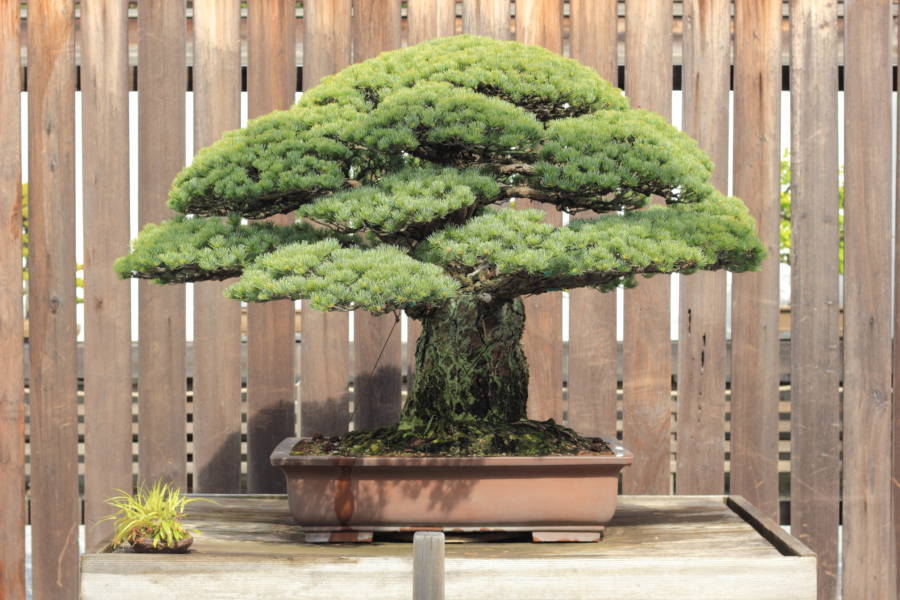
Wikimedia CommonsA famous bonsai that survived the Hiroshima bombing, and is still alive today at 400 years old.
No, Hiroshima is not still radioactive. The radiation from the atomic bomb plummeted dramatically in the days and weeks that followed the attack. What’s more, the Little Boy bomb detonated in the air, which means that most of its radiation was pulled up into the atmosphere.
Is Nagasaki Still Radioactive?
No. Like Hiroshima, Nagasaki is not radioactive. According to the City of Hiroshima website: “The radiation in Hiroshima and Nagasaki today is on a par with the extremely low levels of background radiation (natural radioactivity) present anywhere on Earth. It has no effect on human bodies.”
But even though the radiation quickly faded, the memory of what happened in Hiroshima and Nagasaki back in 1945 still lingers to this day.
After reading about the atomic bombings of Hiroshima and Nagasaki, learn about the Hiroshima maidens, the women disfigured by the attack. Or, discover the story of the Hiroshima bonsai, the tree planted in 1625 that survived the atomic bomb — and is still alive today.





